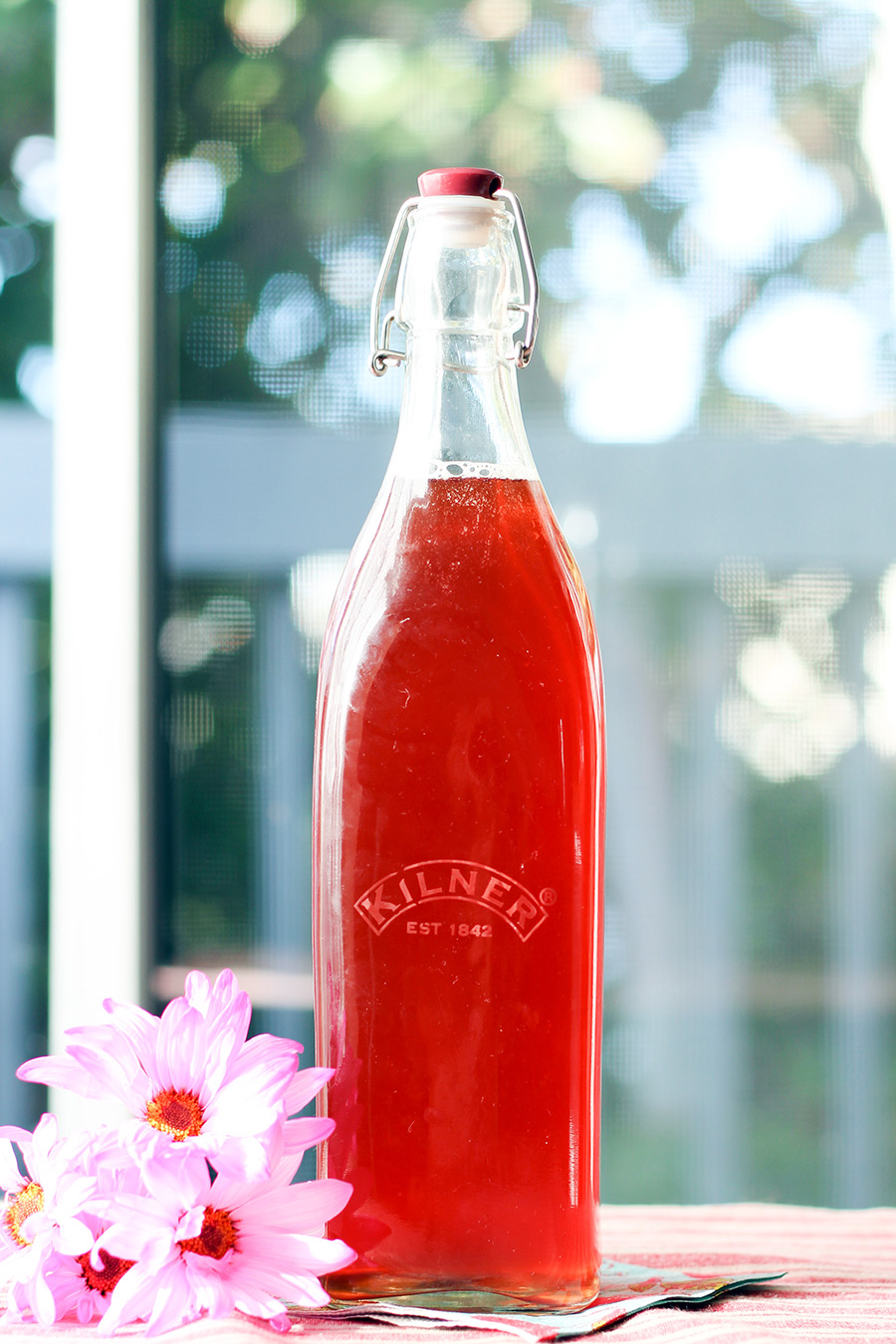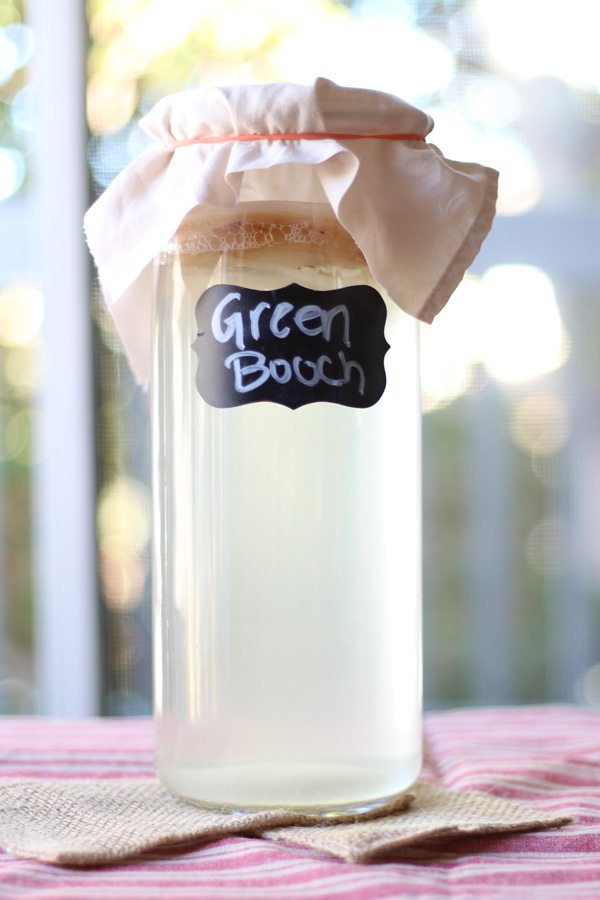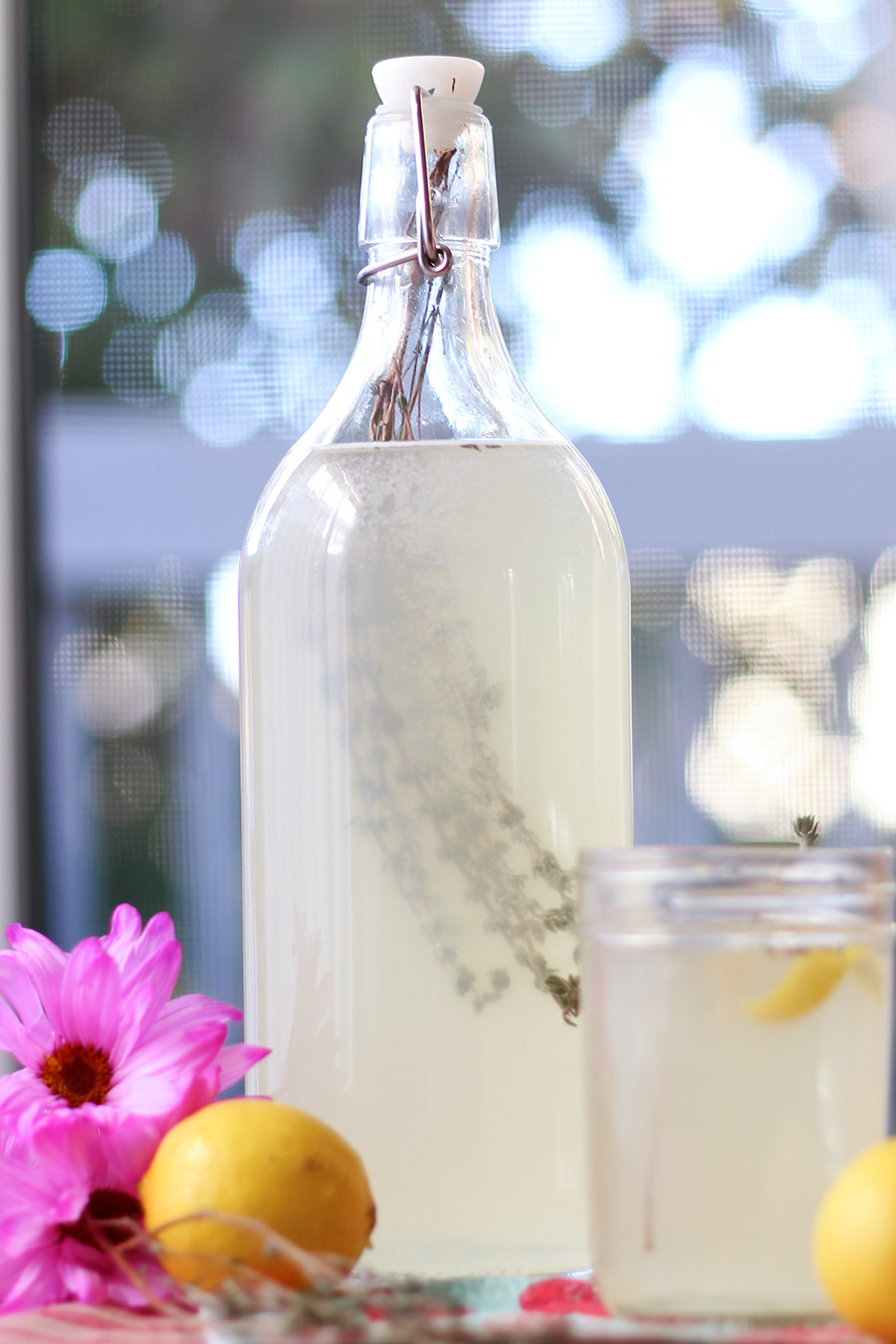
Tired of following recipes and want to learn how to craft your own mind blowing kombucha? You can make sweet booch, spicy booch, savory booch, or just plain booch using different types of tea, fruit, herbs, and spices.
The combinations are endless. And you don’t need no stinkin’ recipe to do it either. Just follow my guidelines to make your own kick-ass flavor combos.
How to flavor kombucha

Primary Fermentation
Primary fermentation is when you make kombucha with tea, sugar and a SCOBY. (Like in this recipe here.) What many don’t mention is that you can use different types of tea and tea blends to get different flavors during primary fermentation.
Most recipes use traditional oolong black tea to make kombucha, but you can use any type of black, green, or white tea to get different results.
Green tea will make a lighter flavored kombucha, while Pu’erh tea will make a strong flavored kombucha. You can use Darjeeling, English Breakfast, Jasmine Green Tea, white teas and many other teas.
I personally love using half green and half oolong tea during primary fermentation. It makes a light, green apple flavor that I really enjoy.
Don’t use flavored teas or herbal teas during this stage of fermentation, because they won’t provide enough nutrients for the SCOBY.
After you’ve brewed your kombucha, the second step is to flavor and bottle with juices, fruit and other foods for secondary fermentation.
Secondary Fermentation

Juice, fruit, herbs and spices can be added after primary fermentation to make your kombucha fruity, sweet or spicy.
After you flavor the kombucha, you’ll bottle it and set it out to ferment a second time for a few days. This is called secondary fermentation.
Fresh Juice
Fresh juice is my favorite way to flavor kombucha. The fresher the juice the more bubbly the kombucha will get.
For 1 gallon of kombucha, add 1 cup of your favorite juice. Pour the plain kombucha into a large pitcher, then add the juice, mix it, taste it, add more juice if you think it needs it and then bottle it.
Fruit
Use fresh cut, pureed, frozen, dried, and freeze-dried fruit to flavor kombucha. Add it directly to each bottle, except for pureed fruit. Pureed fruit should be mixed in a pitcher with the kombucha and then bottled.
- Fresh cut fruit: 1-2 tablespoons to each 16 oz bottle.
- Dried and freeze-dried fruit is more concentrated so you need less to flavor it. 1-2 teaspoons per bottle.
- Fruit Puree: Use about 1/2 cup per gallon of kombucha. Mix it with the kombucha in a pitcher first and then bottle it. The flavor is more concentrated and the bacteria love it so much it will get really, really carbonated fast.
Experiment with the amount of fruit you add to get the flavor you want. Add more for a stronger fruit flavor and less for a lighter flavor.
Herbs, spices and tea
Mint, lavender, thyme, rosemary, ginger, cinnamon, and endless other herbs and spices can be used to flavor your kombucha.
Lemon Thyme Kombucha is a Summer favorite of mine. I add a few sprigs of fresh thyme and lemon juice to flavor it. In the Fall and Winter I like to add cinnamon and cloves or pumpkin pie spice.
If you want to flavor the kombucha with just herbs, add a little sugar to re-activate the probiotic bacteria. Half a teaspoon per bottle is all you need.
You can also flavor kombucha with a flavored tea. I use a Wildberry Hibiscus tea in this recipe and a Pumpkin Spice Tea in this one.
For 1 gallon of kombucha, brew one cup of tea using 2-4 tea bags, let it steep long enough so it’s nice and strong, add some sugar (about 1/2 cup). Once its cooled, add it to your plain kombucha and then bottle it.
The amount of flavoring you add to your kombucha depends on personal taste. You can start by following a recipe and then experiment from there or just experiment to begin with.
Take down notes of what you did, so you can make adjustments next time. Flavoring comes with experience, so the more you make the better you’re kombucha will turn out.
Happy Brewing!
-Danielle
Thank you! I’ve been looking at how to used flavored teas in the second fermentation and finally found your clear explanation of how to do it! Now to wait til my next batch is ready!